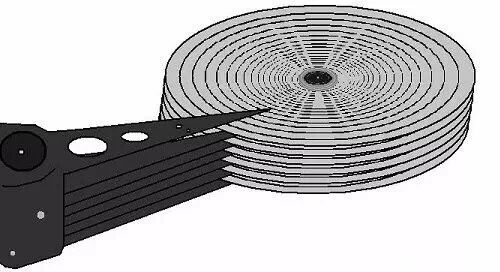Data storage on the Hard Disk Drive (HDD) is processed by magnetic read/write heads. Due to the time cost and other uncontrollable external factors, the head is easy to be damaged, the platter is easy to be worn, even much worse mechanical failure happened.
Mostly, the mechanical failures include abnormal noise, stiction, disability of seeking, pause in spin, none spin once power on again. Normally, we can install a suitable head instead of the bad one to fix those failures. But in actual operation, the failures cannot be fixed in many times even the damaged-heads replaced. The reason might be unmatched of the heads or some platters are worn even the heads are matched. So the drive cannot work in normal. Even worse, after the update, the new heads are damaged again when the heads read the worn platters.

Regarding those failures, SalvationDATA conducts a research and gets a fresh technology to read data from the drive by shielding the damaged-head. The technology is used for data extraction from the drive with partly damaged heads or partly worn platters. The main principle of the technology is to recover data by shielding the damaged-heads or the heads of worn platters, at the same time, to access data by other normal heads. But exactly, how can we get the data from the drive by shielding the damaged-heads?
The developing engineer of SalvationDATA said, “The technology can mainly resolve the data structure of SAP and get the ROM data of the circuit board in the drive, by a method called ‘Boot Code’. Then we find the bitmap information of SAP data volume and revise it to shut down the damaged-heads. Next step, we should verify the revised SAP data volume, generate new SAP data volume and put the verified SAP data volume into ROM. Finally, we use ‘Boot Code’ method to write the revised ROM into the circuit of the drive. Power the drive on, we can use a technique, “Isolated Head Imaging Tech”, to recover or extract data.”
The advantages of the technology compared with similar technologies before are the following:
1. To shield the damaged-heads by shutting down the damaged-heads, it can prevent the twice damage.
2. No need to match or replace heads, it’s economic on time and money.
3. It can deal with the drive, on which platters have a large scale area worn.
4. Without heads replaced, it can extract data from other normal platters as much as possible.
Although the technology can fix the failures caused by heavily damaged heads and worn platters, it has a certain limitation which cannot recover the data 100% all the time. Of course, the limitation is inevitable. Because when we cannot recover data even replaced the heads in the drive heads damaged or platters worn, we should shield the damaged-heads to get the data under normal heads. In this situation, data under the damaged-heads is not accessible. For example, in an HDD with 2 heads, we can get 50% data back after a damaged-head shielded. In an HDD with 4 heads, we can get 75% data back after a damaged-head shielded, and so on.
In fact, concerning all the advantages and disadvantages of the technology, we think its value overcomes the limitations definitely. Generally, when we cannot recover data from the drive platters worn or heads damaged, it is the final guarantee of data recovery to shield the damaged-heads to extract data from drives.
Recently, SalvationDATA will publish a free software with that technology. The software can support multi-platforms and extract data from the drive damaged-heads shielded, coming soon.
